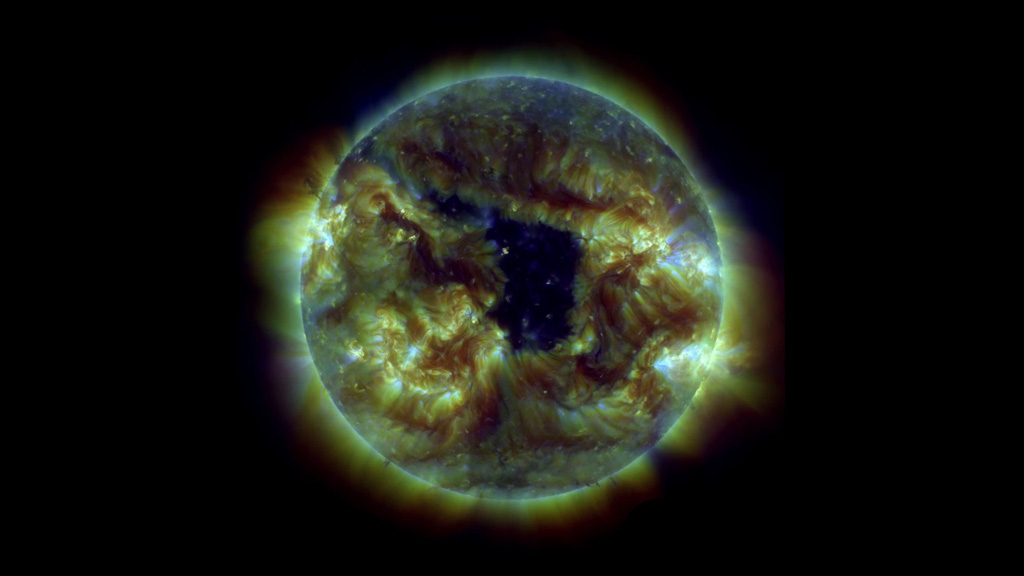Sun
ID: 11586

The sun’s magnetic field wreaks havoc on the solar atmosphere. At times the magnetic field lines that rise and fall from the surface in giant arcs can become detached at one end. When this happens, a ghostly patch develops in the sun’s upper atmosphere creating what’s known as a coronal hole. Viewed at certain wavelengths, the hole appears black as if it were empty. But, in fact, these holes are a source of strong solar wind, where streams of energized particles shoot out into space. If a hole points toward Earth, a bombardment of particles will reach the planet within two or three days, sometimes resulting in aurorae. NASA’s Solar Dynamics Observatory, or SDO, spacecraft has observed many coronal holes since its launch in 2010. Watch the video for a close look at one discovered in May 2014.



Black Hole Sun




Story Credits
Please give credit for this item to:
NASA's Goddard Space Flight Center
Video and images courtesy of NASA/SDO
NASA's Goddard Space Flight Center
Video and images courtesy of NASA/SDO
Short URL to share this page:
https://svs.gsfc.nasa.gov/11586
Keywords:
NASA Science >> Sun
SVS >> App
https://svs.gsfc.nasa.gov/11586
Keywords:
NASA Science >> Sun
SVS >> App







